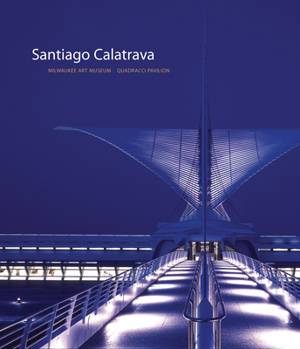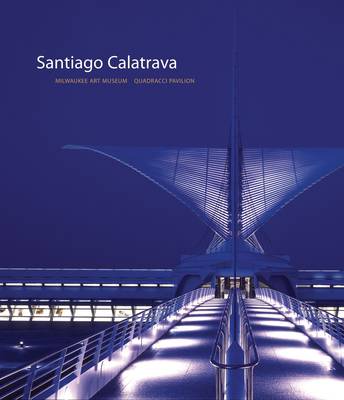
Je cadeautjes zeker op tijd in huis hebben voor de feestdagen? Kom langs in onze winkels en vind het perfecte geschenk!
- Afhalen na 1 uur in een winkel met voorraad
- Gratis thuislevering in België vanaf € 30
- Ruim aanbod met 7 miljoen producten
Je cadeautjes zeker op tijd in huis hebben voor de feestdagen? Kom langs in onze winkels en vind het perfecte geschenk!
- Afhalen na 1 uur in een winkel met voorraad
- Gratis thuislevering in België vanaf € 30
- Ruim aanbod met 7 miljoen producten
Zoeken
€ 30,95
+ 61 punten
Omschrijving
Spanish-born architect Santiago Calatrava has achieved considerable international acclaim in recent years with his breathtaking feats of engineering in the service of elegant and humanistic modern forms. While his most recent success was the much-lauded (and much-televised) stadium, velodrome, and other structures of the Athens Olympics, Calatrava first established his reputation as the preeminent engineer of our time with a stunning series of bridges designed for cities around the globe―Barcelona, Bilbao, Buenos Aires, Orléans, Seville, Venice, and Jerusalem.
Recent years have witnessed the introduction of Calatrava's elegant forms to the American cityscape with designs for an innovative apartment tower and the much-anticipated World Trade Center Transportation Hub, both planned for lower Manhattan. But before these designs were unveiled, Calatrava completed the Quadracci Pavilion at the Milwaukee Art Museum, which Time named the best new design project of 2001. This beautifully illustrated monograph is a detailed exploration of a celebrated American architectural masterpiece.
Calatrava's spectacular cultural and civic projects have secured his place in the pantheon of world-class twenty-first-century architects. In addition to the Milwaukee Art Museum, he's celebrated for train stations in Zurich, Lyons, Lisbon, and Liège; the Sondica Airport in Bilbao; the Tenerife Concert Hall in the Spanish Canary Islands; and the Valencia Science Museum, Planetarium, and Opera House.
Recent years have witnessed the introduction of Calatrava's elegant forms to the American cityscape with designs for an innovative apartment tower and the much-anticipated World Trade Center Transportation Hub, both planned for lower Manhattan. But before these designs were unveiled, Calatrava completed the Quadracci Pavilion at the Milwaukee Art Museum, which Time named the best new design project of 2001. This beautifully illustrated monograph is a detailed exploration of a celebrated American architectural masterpiece.
Calatrava's spectacular cultural and civic projects have secured his place in the pantheon of world-class twenty-first-century architects. In addition to the Milwaukee Art Museum, he's celebrated for train stations in Zurich, Lyons, Lisbon, and Liège; the Sondica Airport in Bilbao; the Tenerife Concert Hall in the Spanish Canary Islands; and the Valencia Science Museum, Planetarium, and Opera House.
Specificaties
Betrokkenen
- Auteur(s):
- Uitgeverij:
Inhoud
- Aantal bladzijden:
- 128
- Taal:
- Engels
Eigenschappen
- Productcode (EAN):
- 9780847827015
- Verschijningsdatum:
- 26/07/2005
- Uitvoering:
- Hardcover
- Formaat:
- Genaaid
- Afmetingen:
- 248 mm x 285 mm
- Gewicht:
- 929 g

Alleen bij Standaard Boekhandel
+ 61 punten op je klantenkaart van Standaard Boekhandel
Beoordelingen
We publiceren alleen reviews die voldoen aan de voorwaarden voor reviews. Bekijk onze voorwaarden voor reviews.









